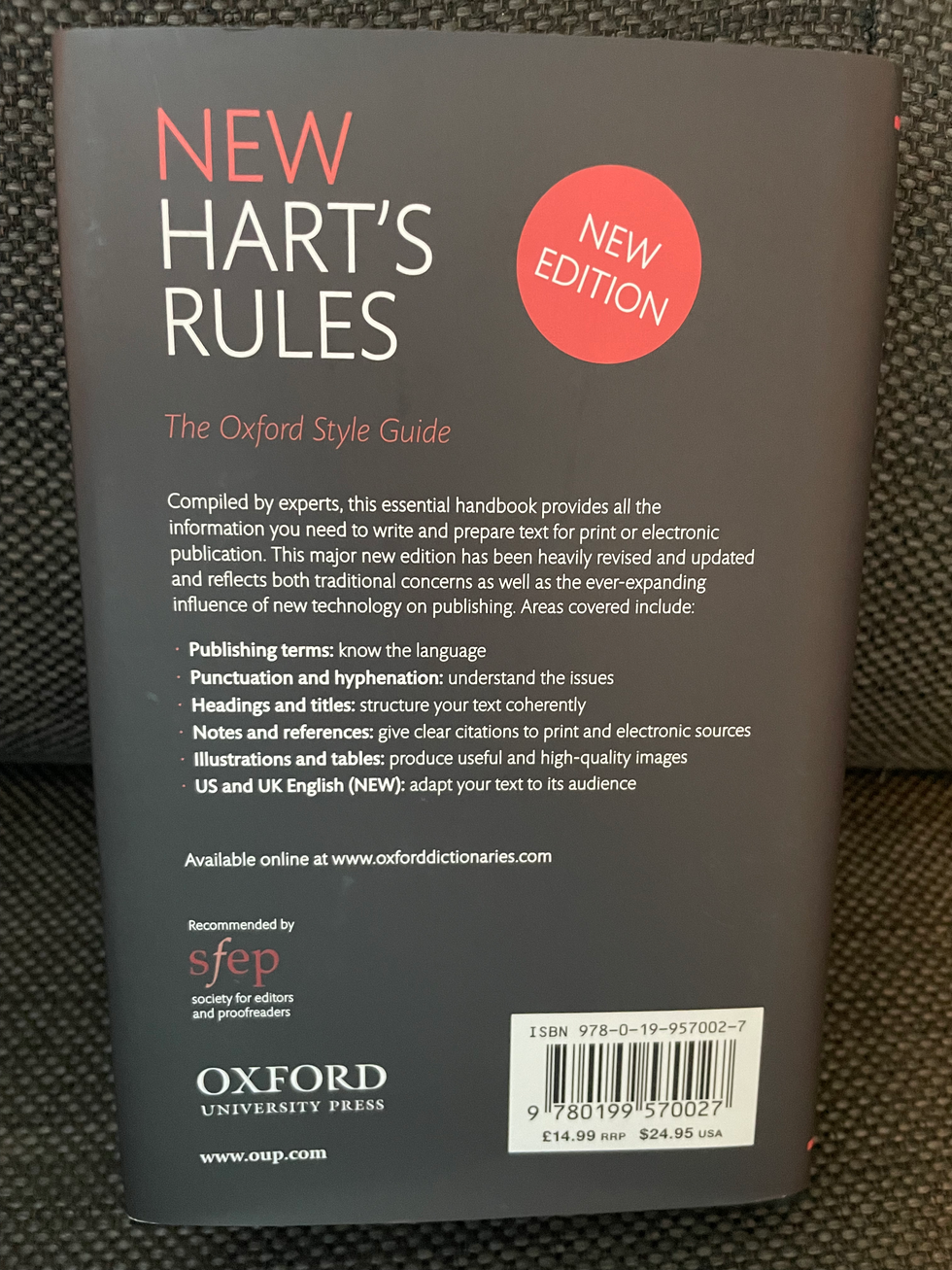What is a style guide? And do you need one?
- Claudia

- Dec 13, 2022
- 4 min read
Updated: Feb 27, 2023
Do not confuse a style guide with a style sheet! These are two different proofreading tools. For example, a style guide can help you create a style sheet, but not vice versa. For more information on style sheets, check out this blog post.
There are a lot of rules in the publishing industry; rules regarding layout, formatting, punctuation, abbreviations, how to cite references, and many more. Whilst you don't have to abide by all rules, it is good practice to know the industry standards so you know what to look out for if you want to be consistent with your writing style.
There are different styles, and one's preference often depends on the area one lives in, the employer one works for or the expected readership of one's written work. I will lay out all you need to know from the most popular reference styles I have come across – with their contents list, some examples, who they are generally used by, and where to find them.
All these books have also been gathered on the Ready2Publish online bookstore for your convenience.
These are photos of the Style Guides I own and use to proofread and proofedit customer's copy.
Chicago Manual of Style (CMOS)
The Chicago Manual of Style is a very popular American style guide. If you are writing for the American public, this is the guide I recommend. Its 1100+ pages cover everything from the basics of publishing to the "dot the i's" rules. I have yet to come across a query that CMOS could not answer.
It features three parts:
The Publishing Process
Books and Journals
Manuscript Preparation, Manuscript Editing, and Proofreading
Illustrations and Tables
Rights, Permissions, and Copyright Administration
Style and Usage
Grammar and Usage
Punctuation
Spelling, Distinctive Treatment of Words, and Compounds
Names, Terms, and Titles of Works
Numbers
Abbreviations
Languages Other than English
Mathematics in Type
Quotations and Dialogue
Source Citations and Indexes
Notes and Bibliography
Author-Date References
Indexes
Example:
6.24 Commas with introductory dependent clauses. When a dependent clause precedes the main, independent clause, it should be followed by a comma. A dependent clause is generally introduced by a subordinating conjunction such as if, because, or when (see 5.200, 5.201). If you accept our conditions, we shall agree to the proposal. Whether you agree with her or not, she has a point.
New Hart's Rules (Oxford Style Guide)
The New Hart's Rules book is only small, but don't let that fool you. It is part of the Oxford Style Guide (there are more books in the series) and, therefore, a preferred guide when you are writing for the British population or countries that prefer British English. This almost pocket-sized book features 400+ pages and covers basically everything. It is my go-to book for those queries that need a mental nudge. Us editorial folk also get confused from time to time!
Contents of New Hart's Rules:
The Parts of a Book
Preparing Copy
Spelling and Hyphenation
Punctuation
Capitalization
Names
Italic, Roman, and Other Type Treatments
Work Titles in Text
Quotations and Direct Speech
Abbreviations and Symbols
Numbers and Dates
Languages
Law and Legal References
Science, Mathematics, and Computing
Lists and Tables
Illustrations and Artwork
Notes and References
Bibliography
Indexing
Copyright and Other Publishing Responsibilities
US and British English
Example:
4.3.6 Figures In general text most styles use commas to separate large numbers into units of three, starting from the right: £2,200 2,016,523,354 but it will depend on the nature of the material; for example technical texts use a thin or non-breaking space as a thousands separator; for more about numbers see Chapter 11 and 14.1.3.
Get one here.
Butcher's Copy-editing (Cambridge Style Guide)
The Cambridge Handbook for Editors, Copy-editors and Proofreaders, AKA Butcher's Copy-editing is the editing bible for most professionals in the publishing industry. It covers everything you need to know to get a book ready for publication. It features 500+ pages that cover subjects like editing, typesetting, and software one can use for on-screen editing. Whilst this is a Cambridge handbook (based on US standards), this editorial bible is useful for everyone that is working in the publishing industry and for those interested in self-publishing that want to learn more about the book publishing process.
Contents of Butcher's Copy-editing:
Chapters
Introduction (to copy-editing)
Preliminary Copy-Editing, Design and Specimen Pages
Preparing the Text for the Typesetter
Illustrations
Proofs
House Style
Preliminary Pages
Indexes
Other Parts of a Book
Bibliographical References
Literary Material
Multi-Author and Multi-Volume Works
Science and Mathematics Books
Other Special Subjects
Reprints and New Editions
On-Screen Editing by Anne Waddingham
Appendixes
Checklist of Copy-Editing
Book Sizes
Abbreviations for States in the USA
Phonetic Symbols
The Russian Alphabet
Old English and Middle English Letters
French and German Bibliographical Terms and Abbreviations
Mathematical Symbols
Hebrew
Arabic
Islamic, Chinese, Japanese and French Revolutionary Calendars
Countries of the Former USSR, Baltic States and Former Yugoslavia
Proof Correction Symbols
How to Check that an ISBN Is Correct
Example:
14.1.1 Greek typefaces There are upright, sloping and sans serif typefaces, with associated bold fonts; a sloping font is normally used for mathematics. Classical texts may be set in either upright or sloping Greek. Emphasized words in Greek are not 'italicized' but letterspaced, underlined or set in bold.
Get one here.
So, now that you've seen the basics of style guides and what they offer a writer, proofreader, or editor which one will you use? Which style guide suits your needs? Let me know in the comments whether it was CMOS, Hart's, or Butcher's.
And if you have any questions after reading this blog, feel free to email me or leave a comment.
Please note that there are more style guides available, which are suitable for texts covering certain professions – think medical, computer science, and business.


















Comments